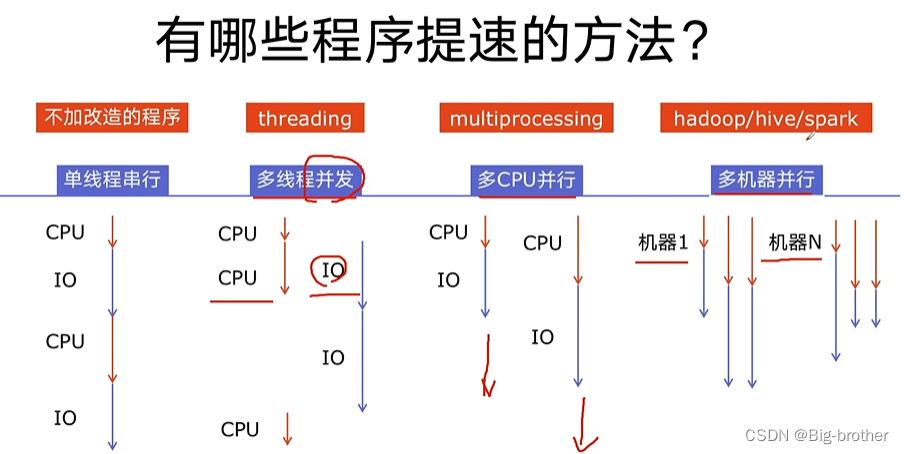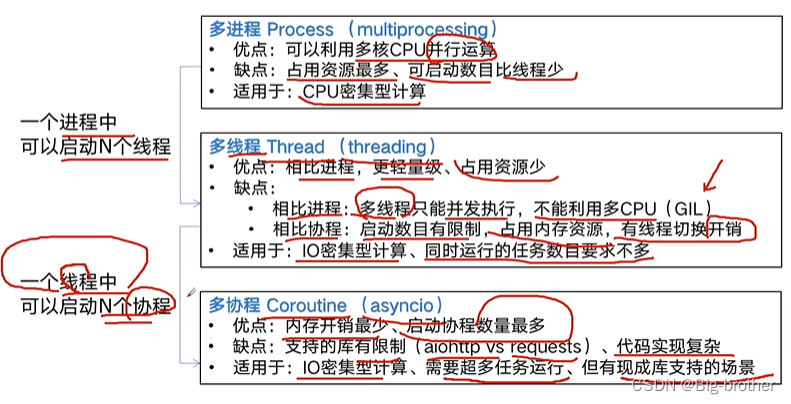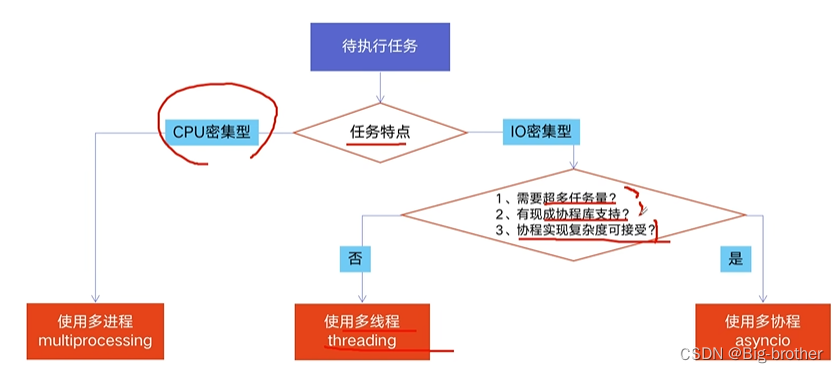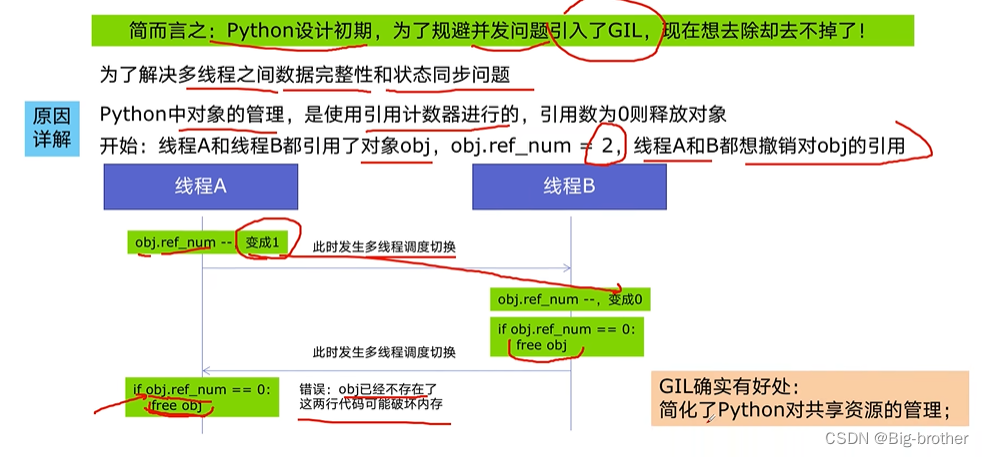一、程序提速的方法

二、python对并发编程的支持
- 多线程:threading,利用CPU和IO可以同时执行的原理,让CPU不会干巴巴等待IO完成;
- 多进程:multiprocess,利用多核CPU的能力,真正的并行执行任务;
- 异步IO:asyncio,当线程比较多时,切换线程也会占用CPU资源,可在单线程中利用CPU和IO同时执行的原理,实现函数异步执行;
- 使用Lock对资源加锁,防止冲突访问;
- 使用Queue实现不同线程/进程之间的数据通信,实现生产者-消费者模式;
- 使用线程池Pool/进程池Pool,简化线程/进程的任务提交,等待结果、获取结果;
- 使用subprocess启动外部程序的进程,并进行输入输出交互;
三、python并发编程的三种方式
3.1 3种方式的区别和选择
多线程Thread,多进程Process,多协程Coroutine。


3.2 GIL

四、实战
4.1 多线程

4.1.1 多线程网页爬虫示例代码
- blog_spider.py
import requests
from bs4 import BeautifulSoupurls = [f"https://www.cnblogs.com/sitehome/p/{page}"for page in range(1, 50 + 1)
]def craw(url):#print("craw url: ", url)r = requests.get(url)return r.textdef parse(html):# class="post-item-title"soup = BeautifulSoup(html, "html.parser")links = soup.find_all("a", class_="post-item-title")return [(link["href"], link.get_text()) for link in links]if __name__ == "__main__":for result in parse(craw(urls[2])):print(result)
- producer_consumer_spider.py
import queue
import blog_spider
import time
import random
import threading# 生产者
def do_craw(url_queue: queue.Queue, html_queue: queue.Queue):while True:url = url_queue.get()html = blog_spider.craw(url)html_queue.put(html)print(threading.current_thread().name, f"craw {url}","url_queue.size=", url_queue.qsize())time.sleep(random.randint(1, 2))# 消费者
def do_parse(html_queue: queue.Queue, fout):while True:html = html_queue.get()results = blog_spider.parse(html)for result in results:fout.write(str(result) + "\n")print(threading.current_thread().name, f"results.size", len(results),"html_queue.size=", html_queue.qsize())time.sleep(random.randint(1, 2))if __name__ == "__main__":url_queue = queue.Queue()html_queue = queue.Queue()for url in blog_spider.urls:url_queue.put(url)#创建生产者线程for idx in range(3):t = threading.Thread(target=do_craw, args=(url_queue, html_queue),name=f"craw{idx}")t.start()fout = open("02.data.txt", "w")# 创建消费者线程for idx in range(2):t = threading.Thread(target=do_parse, args=(html_queue, fout),name=f"parse{idx}")t.start()
4.1.2 线程安全问题
线程安全指某个函数在多线程环境中被调用时,能够正确的处理多个线程之间的共享变量,使程序功能正确完成。由于线程的执行随时会发生切换,就造成了不可预料的结果,出现线程不安全。
使用Lock解决线程安全:
import threading
import timelock = threading.Lock()class Account:def __init__(self, balance):self.balance = balancedef draw(account, amount):with lock:if account.balance >= amount:time.sleep(0.1)print(threading.current_thread().name,"取钱成功")account.balance -= amountprint(threading.current_thread().name,"余额", account.balance)else:print(threading.current_thread().name,"取钱失败,余额不足")if __name__ == "__main__":account = Account(1000)ta = threading.Thread(name="ta", target=draw, args=(account, 800))tb = threading.Thread(name="tb", target=draw, args=(account, 800))ta.start()tb.start()

)

















)